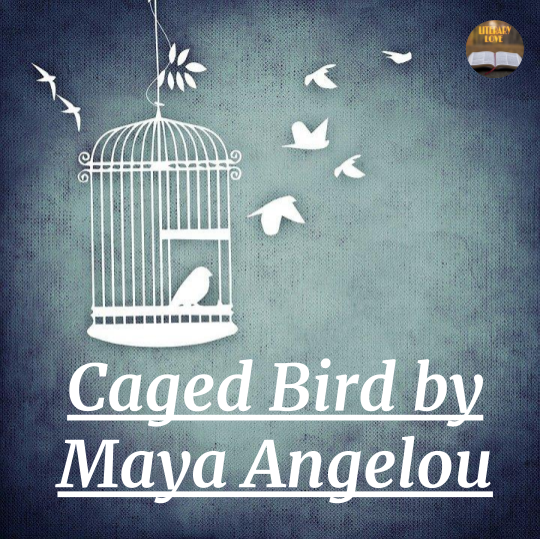On the Grasshopper and Cricket by John Keats
The Poetry of earth is never dead:
When all the birds are faint with the hot sun,
And hide in cooling trees, a voice will run
From hedge to hedge about the new-mown mead;
That is the Grasshopper’s—he takes the lead
In summer luxury,—he has never done
With his delights; for when tired out with fun
He rests at ease beneath some pleasant weed.
The poetry of earth is ceasing never:
On a lone winter evening, when the frost
Has wrought a silence, from the stove there shrills
The Cricket’s song, in warmth increasing ever,
And seems to one in drowsiness half lost,
The Grasshopper’s among some grassy hills.
INTRODUCTION -
"On the Grasshopper and Cricket" is an outstanding poem by the English Romantic poet, John Keats. The poem is sometimes also known by its first line, "The Poetry of earth is never dead." It was written in December 1816 and published posthumously in ‘The Poetical Works of John Keats’ in 1884. The poem is a Petrarchan sonnet i.e. the fourteen-line poem is divided into an octave (eight-line stanza) and a sestet (six-line stanza). The poem follows the rhyme scheme of ABBAABBA CDECDE. The poem praises the endless beauty of nature by taking into account the song of two specific insects, the grasshopper, and the cricket. The song of these two insects is a reminder to the humans of the unending natural melody and beauty. Nature offers love and joy and the human response corresponds to that fondness.
POET -
John Keats (31 October 1795 – 23 February 1821) was an English Romantic poet and one of the main figures in the second Romantic Movement. His contemporaries included famous poets like Percy Bysshe Shelley and Lord Byron. He was enthusiastic about life and art and his verses displayed his taste for distinction and beauty. He is known, particularly, for his odes, which he wrote in 1819. During his lifetime, he published fifty-four poems in three small volumes and a few magazines. Though his works were not recognized during his lifetime, his reputation grew after his death. His most famous works include Ode to Nightingale, Ode to the West Wind, On First Looking in Chapman's Homer, Endymion, etc.
SUMMARY -
The octave begins with a perception of the summer season. The poem starts with an audacious statement - “The Poetry of earth is never dead”. The song of the birds and the cry of the animals never cease and are unaltered. However, when the summer sun gets too hot and bright, the birds find it difficult to keep up their routine. They find shelter from this heat in the cool shadows of the nearby trees. But there is one voice that remains untouched by the increasing heat - the voice of the grasshopper. It continues the "poetry of the earth" further. Its voice runs throughout the freshly mown meadows unwaveringly. Even in the stifling summer days, it never stops its melody. The grasshopper does not feel ‘dizzy’ under the sun. For it, even the summer is a time for joy. Hence, when it has had its fill of fun, it finds comfort under some long weeds and goes on with its song.
In the sestet, the poet shifts the setting to a winter evening. Even during the harsh and chilling climate of winter when all sounds have stopped and everything is numb, the poetry of earth goes on. It is never-ending. When winter arrives and all beings shelter from the cold, solitude and quiet appear to reign. At that moment, a voice is heard that calls out to everyone in the languid evenings by the fire (stove) and that is of the cricket. Even in the freezing winter climate, the cricket continues its song from near a stove. The warmth coming from the stove mingles with the warm tones of the cricket who tries to keep everyone entertained. This song perhaps reminds one who’s half-asleep of the grasshopper, which may be out lost on some grassy hill, singing its heart out i.e. the listeners mistake the cricket’s song for the grasshopper’s one.
The poem refers to the cycle of changing seasons and how, despite being different, winter and summer are part of the same thing. The cricket’s song is connected to the grasshopper’s song, as they are both parts of nature’s resolute and benevolent force.
THEMES -
- The beauty of nature - The poem, on a short note, describes the beauty of nature by the songs of the two particular insects. These songs that fill us with different sentiments and make us warm and cozy are the true songs of nature. They define nature's infinite pleasure and determining occupancy.
END -
The mood of the poem is joyous. It celebrates the calls of the grasshopper and the cricket which are the voice of nature's beauty. The poetry of earth here can be equated to the songs of nature and its creatures. The poetry is unending as no change of season or time affects it and it keeps flowing on forever.











0 Comments